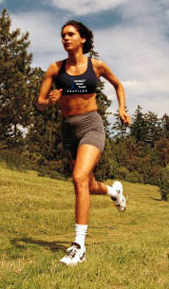Happy Thanksgiving from everyone at Nick Rinard Physical Therapy.
We are so very Thankful to have a strong community that support small business. We couldn’t do it without you, our patients, friends and family!
Nick Rinard Physical Therapy will be CLOSED for Thanksgiving on Thursday, November 27th 2025, Friday November 28th, 2025, Monday December 1st 2025 and Tuesday December 2nd 2025.
Regular office hours will resume Wednesday December 4rd 2025.
If you are in need before then please do not hesitate to call
503-244-6232 or email help@rinardpt.com and we will get back to you as soon as possible.
More
Nick Rinard Physical Therapy will be closed Monday May 26, 2025 for Memorial Day.
We wish everyone a very happy Memorial Day weekend.
Be safe, have fun and enjoy time with family and friends.
We looking forward to seeing all our patients back in the clinic on Tuesday May 27th 2025.
More
A mistake that people often make is waiting too long to start physical therapy treatment for their aches and pains. This commonly occurs because you may be thinking, “this will go away on its own,” or, “it’s just normal for me to feel like this at my age.” I want to clear up some confusion on mechanical pain versus normal muscle soreness that does not require skilled therapy or treatment.
Muscular Pain:
- Experienced after a sudden increase in activity or exercise.
- Running 6 miles when you typically only run 2 miles
- You increased the intensity or length of time to your typical workout
- Will be experienced 1-2 days after the increased activity has been performed and will typically begin to dissipate or be gone in 3-5 days after onset.
- Is typically vague pain or experienced in a general area. The pain will not be sharp or pin-point to a specific area.
- If you’re educated on what muscles perform which actions, the sore muscles will correlate with what activity you were performing.
- Does not have increased or decreased pain associated with positions.
Mechanical Pain:
- May have a sudden onset without explanation of occurrence (you woke up with pain for no apparent reason).
- Will typically have a loss in range of motion. For example: it may be difficult to stand up straight in the morning or after prolonged sitting or driving.
- Will have positions that will increase or decrease symptoms. For example: pain increases with sitting, pain is better while lying down.
If you’re experiencing mechanical pain the sooner you seek physical therapy treatment, the better! A good Physical Therapist can determine which exercises will reduce your symptoms and get you back to doing the activities that you love!
More
Vertigo is different than just feeling dizzy from time to time.
It is an episode that can come on quickly, resolve just as quickly or last for hours and even days.
Vertigo can be caused by no apparent reason, antibiotics, jumping, sneezing, allergies, sleeping, falling to name a few. It can have serious effects on your safety while walking and driving.
Nick Rinard Physical Therapy has had many patients call his/her MD only to be told vertigo will go away on its own or scheduled an appointment to receive a generic hand out-that is not patient individualized. We have found this one size approach does not fit all. These self-help hand-out are most beneficial with the guidance of a physical therapist.
Please do not spend days or even weeks trying to heal yourself or wait for your symptoms to go away.
In as few as 2 visits our tailored approach can get you back on solid ground. Safely walking and driving around without fear of falls or a sudden onset of dizziness while driving.
More
Nick Rinard Physical Therapy continues to get patients results with “practical and effective treatment” since 1996!
Getting patients better in as little as 3 visits with only an average of 6-8 visits per patient.
“After a hit + run accident on my bile, I have spent the last year recovering to the point where I could focus on a shoulder injury.
The orthopedic surgeon referred me to PT and I am delighted that after only three visits, my range of motion has returned and my pain has disappeared.
Thanks to the office staff for promptly scheduling me + to the PT for practical and effective treatment.”
Jennifer
More
By Krissy Brown
03 Mar, 2025
Clinic Announcements, Clinical Case of the Week, Medical Advisory, Physical Therapy Tips
better, few visits, Nick Rinard physical therapy, pain-free, Physical Therapy, Portland Oregon, results
We have all seen it, heard it, and even experienced it. 12-24 visits of Physical Therapy without results.
This is not the way physical therapy should be.
Patients should expect results at every visit- notice a change- see a path forward and a clear end to treatment.
“Nick is very professional and ethical.
Although I was approved for six visits, Nick felt that all progress to be made was accomplished in three visits.
This was very important to me.
He should be commended for business ethics.
Lastly, I am much better than when the PT started!”
Bob
More
By Krissy Brown
04 Feb, 2025
Clinical Case of the Week, Medical Advisory, Physical Therapy Tips
ankle pain, exercise, injured, Knee pain, Leg pain, Low Back Pain, Nick Rinard physical therapy, Physical Therapy, running, treatment
By MiKayla Sanocki, SPT
Did you know a back problem can cause symptoms such as pain, decreased strength and decreased sensations into the thigh, calf, ankle or foot? Physical therapists trained in Mechanical Diagnosis and Therapy (MDT) here at Nick Rinard Physical Therapy can determine during the evaluation if any of these lower leg symptoms are coming from your back.
Check out this bizarre clinical presentation we treated at Nick Rinard Physical Therapy:
She did not remember any trauma to the ankle
The patient came to physical therapy for an “ankle sprain” that occurred 3-months earlier. She stated she woke up unable to put any weight on her right foot. The pain had remained constant in her ankle, so bad at times that she couldn’t walk! Upon further questioning, the patient revealed what she had been doing the day before: She had driven 2 hours, on her way home from helping clean a house. During the drive she had discomfort in her buttock and hamstring that made her want to pull the car over to stretch. She did not remember any trauma to the ankle, however, but the ankle pain was the only pain she was experiencing now.
Her ankle pain has caused her to quit running and yoga — two of her favorite activities.
Mechanical Evaluation finds cause in spine
During the mechanical evaluation we found that certain directions of low back movements decreased the pain in her ankle. After being sent home with 1 simple exercise to perform every waking hour – which she did perfectly – she returned within 24 hours reporting 90% recovery in pain! Over the next week we were able to progress her exercises and now the patient reports no ankle pain at all. In only 4 visits we were able to abolish her ankle pain, and she is now getting back to running and yoga!
The patient reports, “I now have the tools to prevent the return of my back and ankle pain”.
Treatment at Nick Rinard Physical Therapy vs Traditional PT
In contrast to MDT, traditional PT would not have uncovered the spinal cause of the patient’s ankle pain. Treatment would have been ineffective since it would have focused only on trying to treat the symptom.
Do you know if your pain in the legs or arms could be coming from the spine? Schedule your evaluation at Nick Rinard Physical Therapy and find out!
More
“When he handed me Nick Rinard’s card, my chiropractor said he sends his difficult cases to him.
I had persistent back pain that didn’t respond to chiropractic treatments or traditional physical therapy.
With pain being a great motivator, I called Nick’s office.
My path to recovery wasn’t a straight one.
To my surprise I need a total hip replacement. Nick was with me every step of the way and provided a personalized treatment plan both pre-and post- surgery.
Nick helped me navigate the path from debilitating pain to regaining function.
I can now about basic day-to-day activities like sleeping, getting out of bed, sitting, standing, going up and down stairs, and making through the entire grocery store.
I feel strong and bolder both physically and mentally.
Nick understands that physical therapy is more than just physical.
It is also about hope.”
Carla
More
“I had seen a previous PT for a few visits and didn’t feel any better – I thought my sprained ankle was a lost cause.
On my first visit with Dr. Rinard, he diagnosed my issue and provided immediate relief.
I had several PT appointments and felt constant improvement.
I’m back to running and playing volleyball and I could have done it without his help/patience/understanding and knowledge.
Thank you so much! ”
Gloria
More

Happy Halloween from Nick Rinard Physical Therapy.
Celebrate! Stay safe! Enjoy the treats! Avoid the tricks!
Nick Rinard Physical Therapy is here for you- don’t be afraid of any pains you may be having – schedule your visit and let us help you get started healing today!
More


